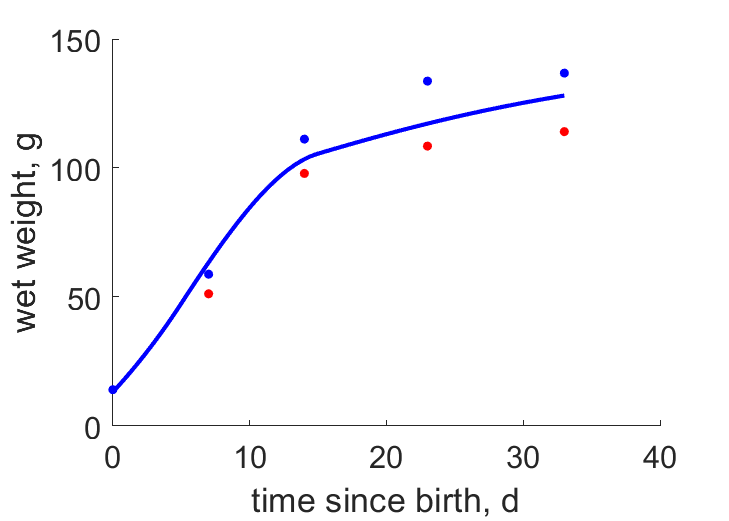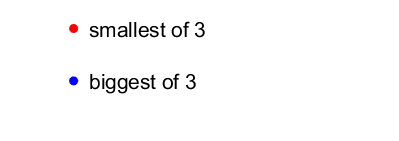Predictions & Data for this entry
| Model: std | climate: B, Csa | migrate: | phylum: |
| COMPLETE = 2.7 | ecozone: THn | food: biCi, biCv | class: |
| MRE = 0.031 | habitat: 0iTh, 0iTi, 0iTf | gender: Dg | order: |
| SMSE = 0.003 | embryo: Tnwf | reprod: O | family: |
Zero-variate data
| Data | Observed | Predicted | (RE) | Unit | Description | Reference |
|---|---|---|---|---|---|---|
| ab | 26 | 26.9 | (0.03443) | d | age at birth | avibase |
| tx | 28 | 28.12 | (0.004288) | d | time since birth at fledging | avibase |
| tp | 84 | 83.19 | (0.009688) | d | time since birth at puberty | guess |
| tR | 365 | 365 | ( 0) | d | time since birth at 1st brood | avibase |
| am | 6935 | 6935 | (3.634e-05) | d | life span | avibase |
| Ww0 | 17.3 | 18.06 | (0.04396) | g | initial weight | avibase |
| Wwb | 14.01 | 13.09 | (0.06595) | g | wet weight at birth | avibase |
| Wwi | 194 | 196.8 | (0.01437) | g | ultimate wet weight for females | avibase |
| Wwim | 167 | 167.6 | (0.003645) | g | ultimate wet weight for males | avibase |
| Ri | 0.01096 | 0.01092 | (0.003837) | #/d | maximum reprod rate | avibase |
Uni- and bivariate data
| Data | Figure | Independent variable | Dependent variable | (RE) | Reference |
|---|---|---|---|---|---|
| tW |   | time since birth | wet weight | (0.09585) | CannAnge2020, avibase |
Pseudo-data at Tref = 20°C
| Data | Generalised animal | Megascops kennicottii | Unit | Description |
|---|---|---|---|---|
| v | 0.02 | 0.02412 | cm/d | energy conductance |
| p_M | 18 | 866.1 | J/d.cm^3 | vol-spec som maint |
| k_J | 0.002 | 0.03552 | 1/d | maturity maint rate coefficient |
| k | 0.3 | 0.3001 | - | maintenance ratio |
| kap | 0.8 | 0.9415 | - | allocation fraction to soma |
| kap_G | 0.8 | 0.8004 | - | growth efficiency |
| kap_R | 0.95 | 0.95 | - | reproduction efficiency |
Discussion
- males are assumed to differ from females by {p_Am} only
- Body temperature is guessed
- mod_1: Pseudo-data point k is used, rather than k_J; Data set tp and parameter t_R are added, the latter replacing clutch interval t_N. Postnatal T is based on PrinPres1991, see get_T_Aves. See further the revision page, theme puberty
Bibliography